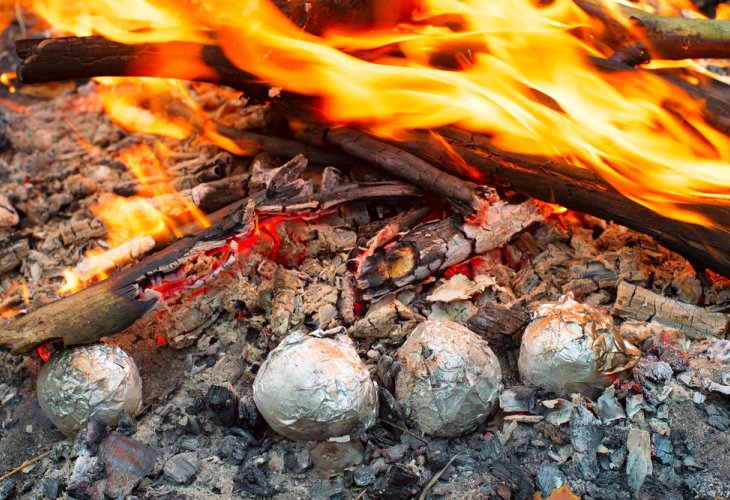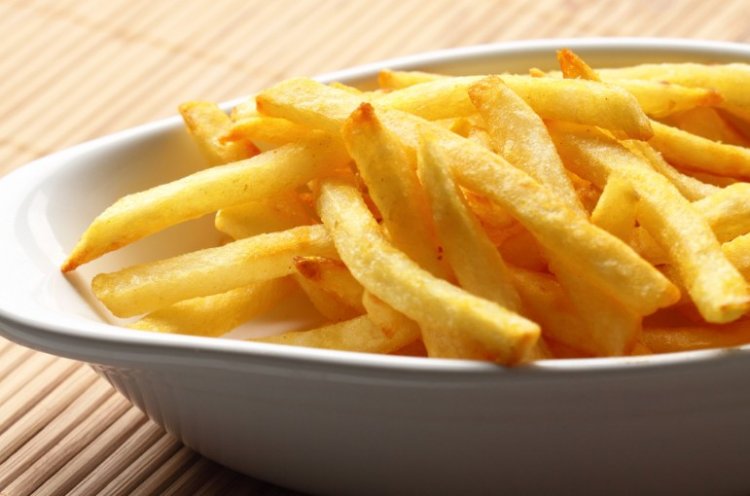Mr. Potato: Everything You Need to Know Before Throwing Potatoes into the Bonfire
From starring in Chanukah latkes to Passover dishes, potatoes now take center stage at the Lag BaOmer bonfire. What should you know about potatoes?
 (Photo: shutterstock)
(Photo: shutterstock)From starring in Chanukah latkes to Passover dishes, potatoes now take center stage at the Lag BaOmer bonfire. They remain popular throughout the year in various forms, despite suffering from poor public relations and branding.
What Do We Get from It?
Nutritional Value: A medium potato weighing 175 grams provides 120 calories, which is less than two slices of bread. It contains only 10 mg of sodium, 4 grams of dietary fiber beneficial for digestive health, 34 mg of vitamin C, and 712 mg of potassium. All this goodness comes wrapped in an unprocessed carbohydrate. Worth it!
Deep Fried
Chips: Potatoes are carbohydrates, and as such, they absorb a lot of oil, which is obviously unnecessary. Therefore, I suggest you measure how many cups of oil you pour into the fryer and how much oil remains after frying. The oil that disappears is absorbed into the potatoes and then into your digestive system. Even frozen chips that are baked in the oven contain oil, and in this case, the food industry typically uses the lowest quality oil, palm oil, stabilizing the chips with a stabilizer marked as E 450.
 (Photo: shutterstock)
(Photo: shutterstock)Mash It at Home
Mashed Potatoes: The best is to season with excellent olive oil, less ideal is to season with butter, and the worst is to season with margarine, regardless of whether the margarine is made from soybean oil, olive oil, or canola oil, as these oils must be liquid at room temperature. You know what, there’s an even worse mash made from instant mash powder, including: dehydrated potatoes, palm oil, salt, sugar, monosodium glutamate, E471, E 450, and a variety of other ingredients from the food industry’s inventory. Terrible!
On the Fire
Aluminum Foil: Aluminum is a metal that can be harmful, as it is suspected of being responsible for the outbreak of serious diseases. So if you wrap a potato in aluminum foil and thread it onto an iron rod for easy retrieval from the bonfire, you might end up with a poisoned potato, inside and out. Well, at least suspected of being poisoned... Therefore, bake the potatoes at home and place them briefly on the edge of the bonfire, so they absorb the taste and smell of the fire.
The Minister of Health
Baked and Boiled: These are the healthiest methods. You can cut potatoes into chip shapes, season with a little olive oil and salt, bake in the oven, and get a great aroma and taste of chips. You can also bake small potatoes in the oven. It’s fun because you don’t need to peel them, they last longer, tasting great even after a few days, and you benefit from the nutritional value of the skins. Regarding cooking, if you want creamy vegetable soup, add a small potato to the soup and blend it. It’s certainly healthier than creamed potato.
Evil Eye
Toxins: Did the potato start sprouting green eyes from its skin? Oh no. Discard it. This is not "bal tashchit". Next time, cook or bake it in time. And no, pulling out the eyes is not the solution, as that’s just cosmetic. The green eyes contain substances called "glycoalkaloids," which are toxins. Therefore, it’s important to store potatoes in a dark, cool, and dry place.
Gluten-Free
Potato Flour: It is one of the main flours used in the gluten-free food industry. The flour contains no gluten, which acts as glue, similar to the paste made from wheat (the word gluten derives from the word Glue = adhesive), so substitutes are used to bind everything. However, it’s important to check if the substitutes are from a healthy source.
Want to know more? Purchase the series of lessons "Grow Healthy" taught by naturopath Sara Bar Asher at the Hidabroot's Jewish Campus.
Sara Bar Asher is a naturopath and lecturer on nutrition and the food industry. Barasher@zahav.net.il

